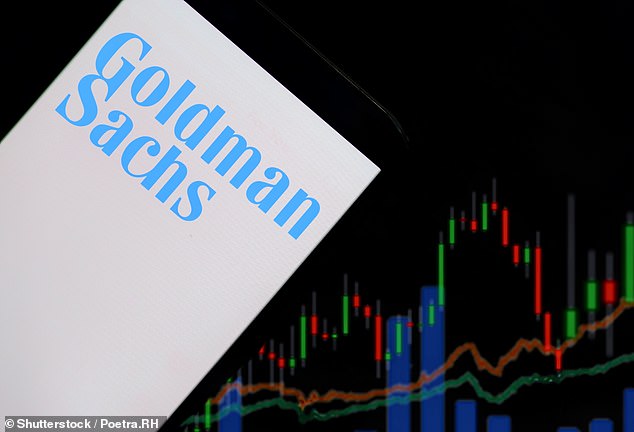Follow the Goldman Sachs brick road: Bank must be right to cash in some of its tech stocks, says HAMISH MCRAE

Where Goldman Sachs goes, other investors would be wise to follow. Last week the bank declared it was time to take some of its profits on its holdings in high-tech firms and put the money elsewhere.
But where? For Goldman it has been particularly energy stocks and Japanese shares, both of which have done well so far this year. The oil and gas companies on the S&P 500 index are up 16 per cent, while the high-tech component is up 11 per cent.
That, by the way, conceals massive divergence in the performance of the so-called Magnificent Seven. The star has been Nvidia, the leading artificial intelligence developer, where shares have nearly doubled since the first week of January. Microsoft has done all right too, up 15 per cent, but Apple is down a bit and Tesla has fallen by 30 per cent.
From a UK perspective, the question is whether anyone who has made money in high-tech America should bring the bounce back home. The FTSE 100 spending much of Friday above 8,000 would seem to say yes, for there are two things happening here.
One, which is clear, is an upgrading not just of energy companies, but also the miners and the banks, all of which are heavily weighted in the Footsie.

Moving on: Where Goldman Sachs goes, other investors would be wise to follow
The other, much less certain, is whether a wider re-evaluation of the UK as a place from which to run a business has begun. If it has, then London-quoted shares should start to narrow the valuation gap with New York, and about time too.
For the brave, my colleague Jeff Prestridge on Pages 52 to 54 writes about a string of 20 recommendations of bargain basement UK shares, including JD Wetherspoon and Greggs.
There is gold, which I wrote about last week and which has had an astonishing run this year. The main buyers seem to have been the central banks of the big emerging economies, which tells us something rather glum about their assessment of the competence and determination of the West to clamp down on inflation.
At the moment US inflation seems likely to stick at about 3 per cent, rather than the 2 per cent target. The current weakness of the euro, and to some extent sterling, is based on a view that the Federal Reserve will be much more reluctant to cut interest rates than its counterparts on this side of the Atlantic.
There are other quirks. Why should UK investment trusts be trading way below the value of their underlying holdings? There are several sitting at discounts of more than 10 per cent, a measure of how unfashionable they are. Reason says this is absurd – the managers are actually subtracting value from the investments they hold. But the narrowing of discounts has been a long while a-coming, and some investors at least don’t seem to want to wait for the wind to change.
My own view on all this is that investors should not try to be too clever. Goldman Sachs must be right in suggesting they should cash in some of their gains on high-tech stocks. Prudent diversification would lead to that, because if any holding has gone up a lot, it will start to overweight the portfolio.
But I do think it should be a case of skimming off the top, rather than getting out of US high-tech altogether. Remember, the US market as a whole represents more than 60 per cent of global equities. You have to be there.
Whether you have to be in bonds is another matter. It has been a miserable year for fixed-interest investments. In the last week of 2023, ten-year gilts were yielding less than 3.5 per cent. Last week they came close to 4.25 per cent, before easing to 4.1 per cent.
US ten-year treasuries were at 3..8 per cent, and are now around 4.5 per cent. The markets are reflecting the fact governments everywhere need to borrow huge amounts and fiscal responsibility seems to be out the window.
Still, this past week has been interesting. We have been expecting a shift from big-tech America to value stocks on both sides of the Atlantic. That seems to be happening at last.





